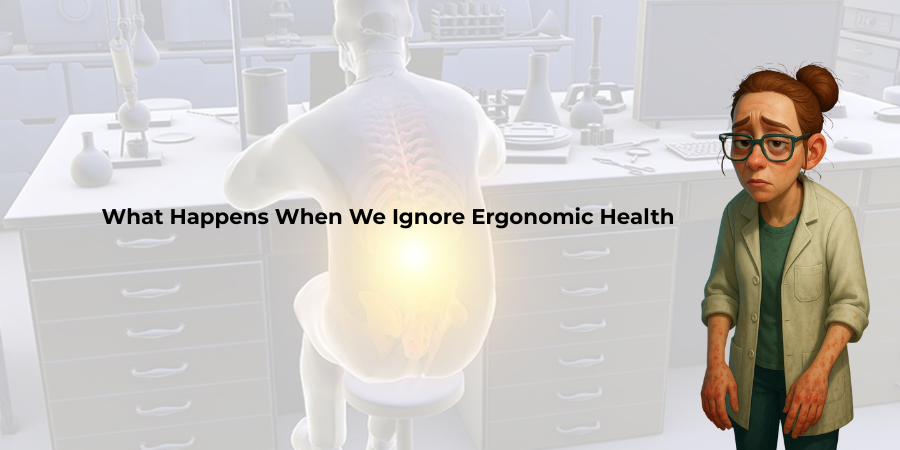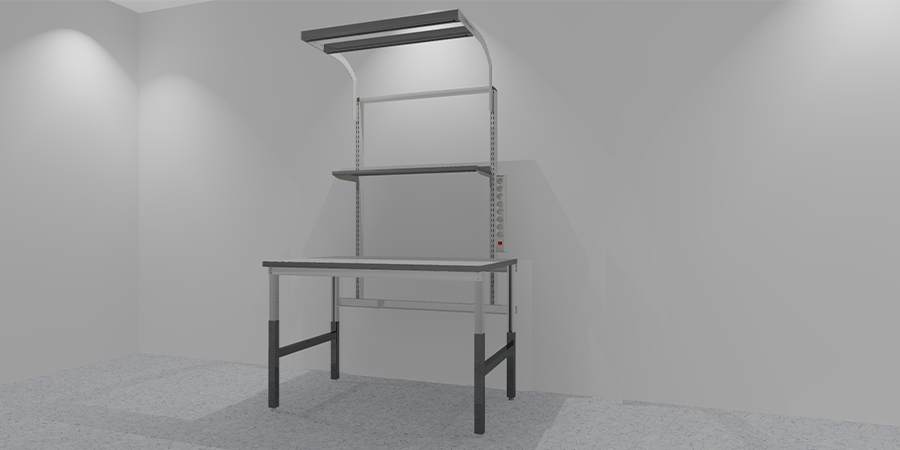How Poor Ergonomics is Reshaping Electronic Engineers: The future of soldering




Meet Alex: The Future Electronic Engineer
We introduce Alex - our representation of future electronic engineer if ergonomic concerns remain unaddressed. As technology advances, the demand for precise and repetitive tasks also increases. However, without proper ergonomic measures, workers may face long term health Problems.
Alex is an example of the physical issues that result from years of working in an ineffective environment.
How is Bad Workplace Ergonomics Really Affecting Us?
Poor workplace ergonomics, especially in settings that demand repetitive, precise tasks, can lead to a number of serious health issues, such as musculoskeletal disorders, chronic fatigue, and long-term injuries, according to the Health and Safety Executive (HSE). In fields like electronics, workers often stay in fixed positions. They need to focus visually and be very precise. This is becoming a bigger concern.
In an era when production efficiency is typically prioritised, many workers' health suffers as a result. The effects of prolonged improper posture, inadequate equipment, and hazardous exposure are beginning to show - not only in how people feel, but also in how they look and function. We looked into what years of poor ergonomics could do to the human body, and here's what we found.


Stooped posture
Continuous bending over microscopes and workstation, forces the spine into unnatural position , leading to long term damage.
Indented Forehead
Extended use of stereo microscopes place unnecessary pressure on the forehead, particularly for workers who wear glasses
Burned Fingers
Handling Hot soldering irons and components without sufficient protection increases the risks of burns
Respiratory Issues
Prolonged exposure to soldering fumes and poor ventilation results in chronic respiratory issues and discomfort.
Slumped Shoulders
Lack of movement and poor posture cause rounded shoulders, leading to discomfort and muscle fatigue.




Skin Sensitivities
Direct exposure to flux and other chemicals can lead to rashes and skin irritation
Eye Strain
Fumes and solder splatter pose a serious risk to vision, leading to irritation or more severe injuries.
Static Shocks
Poor workstation grounding can lead to repeated static shocks, causing muscle twitching and nerve sensitivity over time.
Fatigue and Headaches
Dim or overly bright lightening result in eye strain, headaches and increased fatigue.
Foot Pain
Standing on hard surfaces for prolonged periods without proper footwear leads to foot pain and circulation issues.
The Call for Ergonomic Reform in Electronics Assembly
With the fast increase of electronics production, physical demands on workers are increasing. The consequences of long-term ergonomic neglect are becoming clear, ranging from musculoskeletal disorders to respiratory and optical strain.
Poor workplace ergonomics are currently gaining significant attention from health and safety regulators. The Health and Safety Executive (HSE) highlights the importance of ergonomics in decreasing work-related musculoskeletal illnesses (MSDs), workstation design and repetitive tasks plays a crucial role in long-term health risks.
Repetitive tasks, poor lighting, long periods of standing, and exposure to harmful substances all raise risks in electronics manufacturing. Without intervention, workers may experience posture-related injuries, skin sensitivities, and even chronic fatigue, culminating in a hidden crisis in productivity and human costs.
The model of Alex represents what could become the new norm if workplace design fails to evolve alongside technology. This serves as a reminder that while innovation advances, worker well-being must not fall behind. Simple adjustments such as flexible workstations, better lighting, protective equipment, and proper ventilation could be the difference between a successful career and a lifetime injury.
As the HSE and OSHA highlight ergonomic solutions in its health and safety frameworks, the industry must adopt a more human-centered approach to assembly line operations. The future of electronics is dependent on not only smarter tools, but also healthier hands.
5 Tips for Electronic Engineers to Stay Healthy
1. Move More
Long periods of sitting or standing still, as well as repetitive tasks, can be quite stressful on the body. Take regular micro-breaks throughout the day to stretch, walk around, and reset your posture. It relieves chronic pain and fatigue by keeping your joints flexible and your muscles warm.
2. Protect your Eyes
Constantly looking through microscopes or at small components can result in serious eye strain. Make sure your workspace is well-lit, take regular visual breaks according to the 20-20-20 rule (every 20 minutes, look at anything 20 feet away for 20 seconds), and wear blue-light filters if you use screens frequently.
3. Improve your focus
Long hours on the line require not just concentration but also energy. Avoid relying solely on caffeine and sugary snacks. A well-balanced diet that includes nutritious meals increases your focus, decision-making, and overall stamina throughout the day.
4. Adjust Your Posture
Slouched back posture is not doing you any good. It may eventually result in spinal misalignment, chronic shoulder pain, and a 'tech neck' stoop. Make sure your chair gives good support. Your workplace should be at the right height. Remember to stretch your back and shoulders often.
5. Don’t Forget to Hydrate
Dehydration causes headaches, muscle cramps, and tiredness. These issues make it hard to solder small parts or focus on details. Keep a bottle at your workstation and sip throughout the day.
Summary
The Future of Soldering depends not only on advancing technology but also on protecting the people behind the tools.
Alex is a example of what could happen if we keep overlooking ergonomics.
From slumped shoulders and burned fingers to long term fatigue and breathing problems, the effect of poor workplace design are already showing up.
But the good news is we can change this.
Small tweaks- better chairs, smarter workstations, cleaner air - can make a huge difference in how people feel, work and live.
We believe that innovation should support the workers, not wear them down. Because when people are comfortable, safe and healthy, everyone wins.








